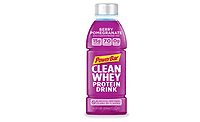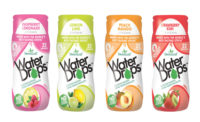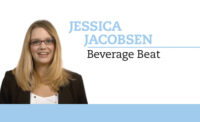Although many consumers might be looking to live healthier lifestyles, they’re still looking for products that satisfy their sweet tooth. Looking for the best of both worlds, consumers are demanding great-tasting sweetened products that do not contain sugar. However, health-and-wellness trends aren’t the only driving forces behind sugar-reduction efforts in the beverage industry. Changing regulations and requirements also are playing a role.
“Sugar reduction is the most common theme in the beverage industry at the moment,” says Philip Coggins, director of commercial sales at Pyure Brands, Naples, Fla. “Across the country, more and more local governments have implemented soda taxes and other regulations aimed at limiting sugar intake.”
Among the governmental factors impacting the sugar-reduction trend are the U.S. Food and Drug Administration’s (FDA) new Nutrition Facts label, which will highlight added sugars, as well as the U.S. Health and Human Services’ 2015-2020 Dietary Guidelines. These changes have driven many beverage-makers into formulating more low- and no-sugar products, according to sweetener suppliers.
“The 2015-2020 Dietary Guidelines focus on healthy eating patterns throughout the lifespan. Part of a healthy eating plan is limiting calorie intake from added sugars and saturated fats,” explains Matt Drew, director of strategic marketing at Chicago--based Archer Daniels Midland Co. (ADM). “In addition, the upcoming Nutrition Facts label requires labeling the amount of added sugar in a food and beverage. These factors are bringing the amount of added sugar consumption to the forefront for consumers causing beverage-makers to look for low- to no-calorie sweeteners that have a healthy halo and provide the desired level of sweetness.”
Highlighting the speed at which beverage-makers are working to comply with the regulations, Thom King, chief executive officer of Portland, Ore.-based Steviva Ingredients, notes that the company has seen a ten-fold spike in requests for reformulation from beverage manufacturers. “While the FDA has pushed [back] the implementation date for compliance, beverage-makers see the writing on the wall and continue to explore clean-label sugar reduction, mainly to escape municipalities taxing on the added sugars,” he says.
Andy Ohmes, global director of high intensity sweeteners at Minneapolis-based Cargill, notes that the new guidelines and nutritional information will shift how consumers shop and which products they purchase.
“The upcoming changes in nutrition facts panels will shift the paradigm for consumers,” he says. “Top of mind will certainly be calories with its larger bold font, but the inclusion of ‘Added Sugars’ to the panel will also have an impact on consumer perception and purchase decisions. More beverage-makers will likely explore reformulations aimed at either targeted levels of added sugar or calories. However, while sugar content will continue to be important to consumers, successful new beverages must deliver the great taste consumers expect.”
Clean, healthy, sweet
Continuing interest in general health and wellness also has been a driving force for beverage-makers looking to reduce sugars in their products. Highlighting the influence of health and wellness on consumer packaged goods, ADM has identified two main trends that are impacting food and beverages: “Modern Living” and “Living Wellness.”
“Modern Living and Living Wellness are two macro trends ADM has identified through global research that define the current and future food and beverage culture,” Drew explains. “Modern Living describes the paradigm shift that is impacting how people live, work and dine. As more consumers across the globe migrate to cities, their routines and consumption habits are changing. These modern consumers are taking an increasingly culinary, no-compromise approach to the foods and beverages they consume, and are not willing to accept added sugars or salt to drive flavor.
“Living Wellness describes the growing trend for better living through better foods and more purposeful ingredients,” he continues. “Consumers are taking a more holistic approach to their health. With beverages, this means focusing on clean labels, clear labels and ingredients that serve a wellness purpose. Artificial ingredients are being replaced by natural alternatives. [A] clear label goes beyond the removal of perceived unhealthy ingredients. Consumers want the ingredients in their purchases to be short, simple and easy to understand.”
Faith Son, head of marketing and innovation at PureCircle Ltd., Oak Brook, Ill., notes that beverage-makers are responding to the trend.
“In the light [of] the growing global concerns about obesity and diabetes, the beverage industry is working quickly to reduce the sugar contents of their products and offer consumers a range of product choices to moderate their intake of sugar,” she says. “… Growing demand and awareness by health-and- wellness advocates has resulted in an increasing number of beverage products specifically formulated to contain less sugar and overall calories, whilst retaining their great taste. At the same time, consumers are increasingly looking for natural-origin and plant-based alternatives to sugar.
While consumers are looking for better-for-you solutions with less sugar, they’re still looking for great taste, which remains the dominating purchase driver, notes Abigail Storms, vice president of platform management and sweeteners at Tate & Lyle, Hoffman Estates, Ill.
“Over the last several years, there has been an increased demand for beverages with less sugar, fewer calories and more easily recognizable ingredients. At the same time, consumers still rank taste as their top purchase motivator. In fact, IFIC found that 84 percent of consumers say taste is their top purchase driver of food and beverages, followed by price (65 percent) and healthfulness (63 percent),” she says citing the 2017 IFIC Health and Wellness Consumer Report.
As consumers are looking to live healthier lifestyles, many also are looking for natural sweetening solutions that offer low or no calories and great taste.
“We know that consumers are also seeking more natural sweetening solutions that help them reduce calories and sugars, but they’re not willing to sacrifice on taste. In fact, the most important benefit to a consumer when choosing a sweetener is that it’s a ‘good balance of taste and health.’ Stevia ranked second highest in this attribute, [second] only to honey,” Storms says, citing Tate & Lyle’s Sweetener Perception Research conducted by Ipsos in December 2015.
Tate & Lyle provides several sweetener solutions, and most recently partnered with Bellingham, Wash.-based Sweet Green Fields to provide greater access to the company’s stevia sweeteners. Tate & Lyle’s sweetener portfolio includes Intesse, Optimizer Stevia, Dolcia Prima Allulose, Tasteva Stevia Sweetener and Purefruit Monk Fruit Extract, among others.
When it comes to natural sweetening alternatives, stevia, erythritol and monk fruit are popular in beverage formulations, Steviva’s King notes.
“We have seen spikes in erythritol, stevia, monk fruit and sweetening systems that incorporate all of the above,” he says. “We are seeing substantial growth in purified monk fruit extract since many of the offnotes have been naturally removed. The biggest interest lies in our proprietary line of sweetness modulators that utilize naringin and thaumatin.”
Steviva offers MonkSweet+, a monk fruit, stevia and erythritol blend; and Erysweet+, a blend of stevia, erythritol, and the sweetness modulators BlockAid N and BlockAid T, King says.
Cargill’s Ohmes also notes that stevia is a popular natural, calorie-free sweetener that has steadily proliferated in beverage formulations. “We continue to see a steady stream of new products sweetened with stevia. Nowhere is this more evident than in beverages, where the use of stevia sweeteners has doubled in the past six years,” he says.
Afrouz Naeini, senior marketing manager of sweetness and beverage at Westchester, Ill.-based Ingredion Inc., highlights the innovation that is taking place in stevia sweetening solutions.
“Sweeteners such as stevia are gaining more traction with consumers due to its nature-based positioning,” Naeini says. “In parallel, advancements in science and technology is enabling stevia suppliers to introduce next generation stevia products that provide a much cleaner, sweeter taste and are helping to enable higher levels of sugar reduction.”
As consumers strive to live healthier lives, the trend is expected to continue, experts note.
“Given consumers’ growing concerns about health and wellness, we see continued opportunities for reduced-sugar beverages,” Ohmes says. “Consumers want to reduce sugar consumption, but are shifting away from traditional, artificial, low- and no-calorie sweeteners in favor of alternatives such as stevia.”
Making it happen
With a strong demand for reduced-sugar products, beverage-makers are tasked with formulating, or reformulating, products that taste great and offer a similar experience to that of sugar-sweetened products.
“Developing the next great, reduced-sugar beverage starts with an in-depth understanding of the many facets of sweetness,” explains Wade Schmelzer, principal scientist at Cargill. “Each sweetener has its own distinct profile of immediate upfront sweetness, peak middle sweetness and latent sweetness. As a gold standard, sucrose has [a] relatively quick onset with a high-quality, rounded middle sweetness and minimal lingering aftertaste. When reducing sugar, recreating this experience is the key to meeting consumer taste expectations.
“With this goal in mind, the first step in product development is deciding just how low to go,” he continues. “Today’s competitive marketplace demands that the product taste great. Beyond that, it must be compelling to label-conscious consumers. Some consumers are looking for reduced-sugar claims, [while] others may be motivated by a specific label target such as less than 10 grams of sugar per serving.”
Pyrue Brands’ Coggins explains that sweeteners have various profiles and choosing the right one for an application is essential.
“When choosing sweeteners for a beverage product, formulators should consider the nature and functionality of the product and who will be consuming it,” he explains. “Consumers expect certain sweetness from certain products — a lightly sweetened flavored water will be sweetened differently than an old-fashioned, southern sweet tea product.”
Yet, PureCircle’s Son notes that several other factors also should be considered when choosing the right sweetening solution.
“Beverage companies need to be aware of a number of factors including the source of origin of the ingredients, taste and mouthfeel of the finished product,” she says. “Other considerations include consistency and stability of supply, given global demand for their products, as well as long-term cost-effectiveness of the sweetener ingredient.”
PureCircle offers more than 14 stevia-based sweeteners and flavors, including its Sigma-Beverage stevia sweetener, specifically designed for beverage formulations, Son says.
Expanding on this, handling, processing and shelf-life also are important factors to consider when choosing sweetening solutions, notes Akshay Kumar Anugu, associate for global sweetener development at Ingredion.
Although a variety of solutions are available, formulating to reduce or eliminate sugar with high-intensity sweeteners, while popular in formulations, can present some challenges, Coggins notes.
“There is a learning curve when it comes to formulation with high-intensity sweeteners versus sugar,” he explains. “The variety of sweetness can be different within the same sweetener type, and that can even be exacerbated by other ingredients in the product.”
Pyure Brands offers organic stevia erythritol sweetening solutions, which all are organic and/or Non-GMO Project Verified, Coggins says.
When sugar is reduced, several other aspects of a formulation must also change, explains Ihab Bishay, senior director of research and development (R&D) for sweeteners at Ajinomoto North America Inc, Itasca, Ill.
“Typically, when reducing sugar in beverages, one uses clean sweeteners that deliver the desired sweetness profile. Often, this involves two or three sweeteners that each contribute to the overall sweetness profile, as well as taste modifiers to round out the profile,” Bishay explains. “Next, one must also readjust the acidulant system to match the profile of the sweetener system; same with the flavor system. Finally, the body, or mouthfeel, needs to be rebuilt to account for the reduction in sugar solids. All the components, sweeteners, acidulants, flavors, mouthfeel agents [and] taste modifiers, must be in balance to deliver the target profile.”
In order to achieve this goal, beverage-makers have a range of sweetening options at their disposal. Ajinomoto North America’s Bishay highlights the benefits of aspartame and its branded product — Advantame — in sugar-reduction formulations.
“We are seeing beverage manufacturers focusing mainly on added sugar reduction as they prepare their products for the change in the nutritional label,” Bishay explains. “As they look to reformulate their products to reduce added sugar, they have two options in the alternative sweeteners group that stand out for clean sugar-like taste: aspartame and Advantame. Companies can select from a wide variety of sweeteners, but due to the inherent sugar-like taste of sweeteners like aspartame and Advantame, manufacturers have found that they can achieve the closest sweetness taste as their original product without the added calories.”
Ajinomoto North America offers Advantame and aspartame sweeteners and has a Customer Application Center that helps its customers develop formulations, Bishay says.
For some formulations, blending sweeteners can be an effective way to reduce or eliminate sugar, while maintaining the key characteristics of a product, like taste and mouthfeel.
“Effective blending of sweetener ingredients can significantly improve the quality of sweetness, enhance sweet/sour balance and deliver a more robust flavor, which are all critical sensory characteristics for a successful product launch,” Cargill’s Ohmes explains. “For example, using stevia and erythritol together can result in an excellent tasting beverage.
“However, especially with deeper sugar reductions, it is sometimes necessary to leverage natural flavors, such as sweetness enhancers or modulators,” he continues. “These types of flavors can enhance upfront sweetness or round out the sweetness profile, delivering a closer dynamic to the full-sugar beverage.”
Cargill offers a portfolio of stevia and erythritol sugar-reduction solutions, which includes Truvia stevia leaf extract (Reb A), ViaTech stevia sweetener and Zerose erythritol. Next year, the company will launch EverSweet, a stevia ingredient.
ADM’s Drew adds that sweetener systems also are a beneficial option for beverage-makers looking to reduce sugar.
“These ingredients can consist of the sweetener plus flavors or flavor modifiers. The blend yields sweetness, texture and flavor in one convenient, integrated and optimized ingredient system,” he says. “ADM offers the broadest range of tried-and-tested, singular sweetener ingredients, purposeful sweetener blends and complete sweetener systems for beverages and beyond.
“Sweetener systems also provide the benefits of sweetness perception, flavor modification, texture, mouthfeel and/or color in one complete and convenient solution for developers,” he continues. “For example, in a beverage, a system of stevia and natural flavors can be used for taste modification, calorie reduction and reduced sugar content. Another option is building a system with fruit extracts and taste modification flavors, resulting in sugar reduction, cost reduction and clean labels.”
ADM offers a variety of sweetening solutions, including SweetRight stevia, VerySweet monk fruit, Fruit Up, VivaSweet sucralose, dry sweeteners and many more, Drew says.
Going further, Ingredion’s Kumar Anugu notes that sweetness modulation techniques also can be used to overcome sensory obstacles when removing sugar from a formulation.
“Sweetness modulation techniques can be used in conjunction with sweeteners to achieve desired sensory properties,” Kumar Anugu says. “Modulation technology is advancing as chemosensory is playing a major role in developing new solutions.”
According to Naeini, Ingredion offers a variety of sweetening solutions, including its Bestevia Reb M Stevia leaf sweetener, as well as several Non-GMO options, including glucose syrups, maltodextrins, glucose solids, dextrose, polyols and stevia. BI






